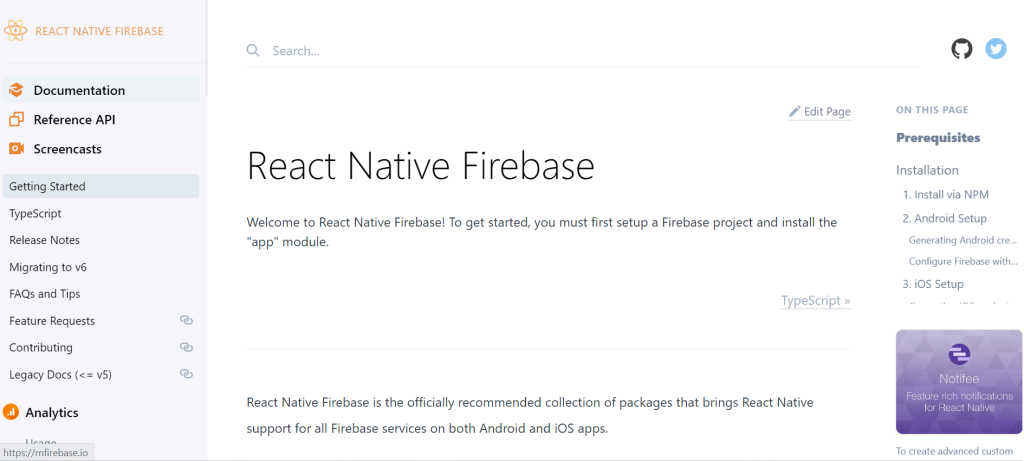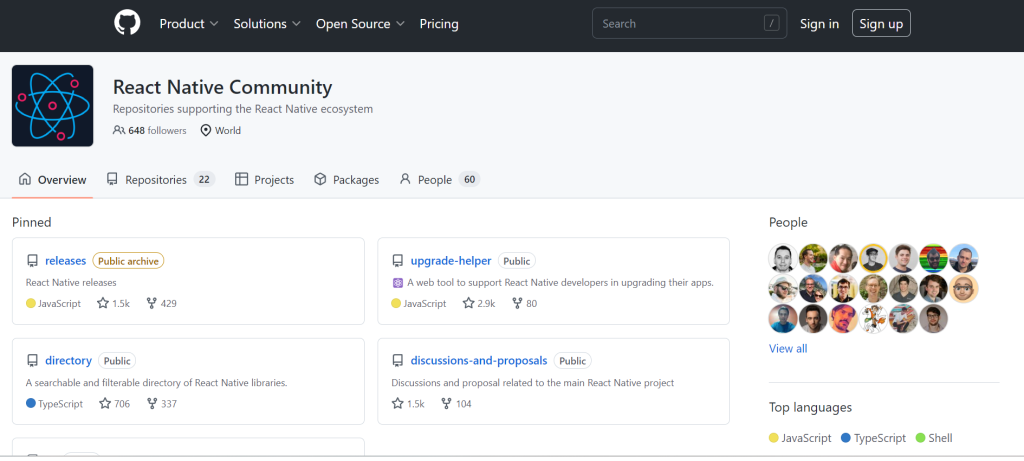Mobile apps are such intrinsic parts of our existence now, it’s hard to imagine life without using one. There’s an app for practically everything. Now, the proliferation of apps has exponentially increased the demand for cross-platform app development. Speaking of the cross-platform process, React Native is often the preferred choice to build robust apps for multiple forms. Companies such as Facebook and Airbnb have trusted React Native for Cross-platform app development.
It’s crucial for businesses to create apps for a diverse user base. However, creating apps for separate platforms can sometimes affect the quality. This becomes a major roadblock to the success of businesses in the long run. React Native presents a comprehensive solution to this issue.
With that thought, let’s delve deeper into cross-platform app development and how using React Native is the perfect choice for such apps.
What is Cross-platform App Development?
Cross-platform application development is a process of building apps which utilize single code systems. These apps can run on diverse operating systems and eliminates the need for developing different app versions for each platform.
The idea behind the cross-platform app development approach is to produce software or applications that work perfectly in more than one specific digital environment, with the primary purpose of selling it to a wider set of consumers.
The quick turnaround time and cost-efficiency of cross-platform apps make them particularly suitable for small and medium businesses or startups.
Causes for Choosing React Native Framework for Cross-platform App Development:
- Supports Third-Party Plugins for Enhanced App Functions
React Native supports third-party plugins since it’s JavaScript based. Beneficial for developers as it allows them to take their picks from a wide range of tools and libraries to speed up the development process.
There are countless open-source libraries available that can be used to add features such as analytics, push notifications, and crash reporting. The multiple advanced plugins enable developers to incorporate any desired functionality into the app without investing too much time or money.
For instance, if you want to add push notifications to your app, you can utilise the React Native Firebase library. It’ll save a significant amount of time and effort that developers would’ve otherwise spent coding from scratch.

Source: Rnfirebase.io
2. Cost-efficiency Is Vital
React native empowers developers to build sophisticated cross-platform apps without making them an expensive affair. When creating an app, nearly half of the generated code can be utilised for various platforms. Additionally, cross-platform app development requires only limited expenditure on quality assurance. In fact, the elements of the user interface are specific to each platform and have a common codebase.
As opposed to several other frameworks, React Native also allows developers to spend less time debugging as they only need to fix the bugs in the common codebase once.
3. Code Reusability and Modularity for Efficient App Development
React Native originates from JavaScript, which is widely recognised as one of the most popular and high-level interpreted programming languages. It is comparatively easier to read and debug than other popular programming languages such as Swift and Java.
JavaScript is known for code reusability, which speeds up the process of cross-platform app development. The modular structure of React Native also ensures the code is simple to understand and maintain. App developers can now share common codes across platforms when building mobile or web applications with minimum expenses and effort.
The closed source programming languages such as Swift or Java allow limited access and can’t make any changes. Unlike these alternatives, React Native is more appealing to use for cross-platform mobile or web app development.
4. Speeds Up the Development Process Through Hot Reloading
Hot Reload is one of the most special features that comes with React Native. It lets you keep track of the changes that you have made in the code without reloading your entire app. This allows you to refresh the app during the development stage itself.
This feature also provides real-time data for the users of the application. Additionally, it helps with updated UI content and structure content while the user changes the code and script.
5. Ensures Better User Interfaces (UI) for Cross-platform apps
React Native uses JavaScript XML (JSX), a syntax extension of JavaScript, which enables developers to write clean user interfaces for various apps.
It’s incredibly essential because, in React, user interfaces are built using declarative programming, which minimises coding errors and makes it quite simple to see where things went wrong.
For instance, if there’s a button element in the UI of an app and you want to change its colour on hover, you can include a few lines of code to achieve that using CSS. In Swift or Java, you’ll have to write different codes for each platform to achieve the same result.
6. Ease of Integration with Backend
Several popular frameworks like Node.js and Express.js can be used to develop a backend for your cross-platform applications. Integrating the apps with the backend is simple with JavaScript, which is frequently used for backend development. Additionally, React Native uses the same language for both frontend and backend development. This makes it easier to hire competent React Native developers who can skilfully integrate React Native with any backend framework.
If a mobile app is being built with diverse target consumers in mind, then React Native will be useful to develop cross-platform apps that support both Android and iOS devices.
7. Helps Enhance the Capabilities of Apps
Apps built using React Native can be easily upgraded to support other operating systems such as Windows or tvOS. It’s possible because of the flexibility offered by JavaScript. It’s convenient to port the app to other platforms since React Native uses a single code base for multiple platforms.
The popular React Native library, ReactXP, can be used to develop cross-platform apps that work on multiple platforms such as iOS, Android or Windows. ReactXP takes care of platform-specific code.
8. Expansive Community
Since it’s an open-source platform, the documentation is accessible to anyone in the React Native community of experts. The community experts often provide helpful insights, if you encounter any issues with React Native app development.
These communities also enable developers to share their experiences and present brief specimens of their work which allows them to improve and write better codes. Once developers learn something new while working with React Native, they can share their thoughts on the GitHub React Native community. There are ample opportunities to get useful feedback and take part in discussions with other members of the community.

Source: GitHub React Native Community
9. It Guarantees Code Safety Since It’s Licensed Under MIT
React Native is licensed under the Massachusetts Institute of Technology license which ensures that your code is secure. Also, if you want to make any changes to the React Native code, you can do that without copyright issues.
The platform also allows you to develop your app in JavaScript. This also indicates that anyone acquainted with JavaScript will be able to easily contribute code to your app.
10. Ease of Tracking App Analytics for Businesses
Businesses are required to keep tabs on the analytics of their mobile or web apps to understand consumer behaviour and make changes accordingly. React Native makes it quite simple to follow your app’s analytics as it employs a single code base for both Android and iOS platforms. You’ll not have to set up separate analytics tools for each platform.
Additionally, there are third-party libraries such as Mixpanel and Segment which can be utilised to set up email campaigns and push notifications.
The Takeaway
If you have made it to the end of this blog, it’s evident the power React Native holds to develop high-quality cross-platform apps. Whether it’s cost-efficiency, convenience and code safety, it fulfils diverse business needs. Hence, React Native is an obvious choice when you’re aiming to build multifaceted and user-friendly apps.
